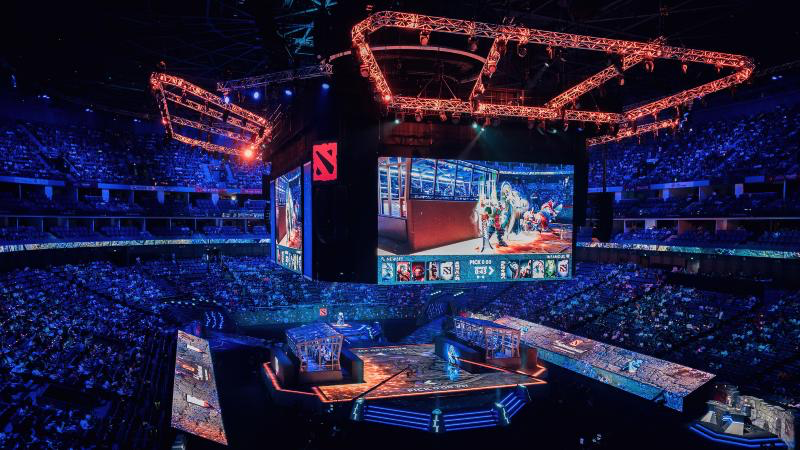The Walt Disney Company reported its fiscal fourth quarter of the year to 30th September last Wednesday, with the focus for the company remaining in the streaming space. Disney+, Hulu, and ESPN were all big talking points coming out of the filings and investors call, but talk of overall cost cutting continuing, restructuring, and investment remain hovering over everything Disney is doing at the moment. This is a company very much in a period of flux, and a critical one at that.
Disney+
 Disney+ subscribers has now reached in excess of 150 million, up from 146.7m in the previous quarter. Of that, the “core” Disney+ subscribers reached 112.6m, whilst the India based Disney+ Hotstar accounted for 37.5m. 12.5m subscribers were lost from their Hotstar service as Disney begin to pivot away from low margin subscribers. Much of the churn in subscribers is attributed to the loss of sports rights, including the critical Cricket rights that are so popular in the region.
Disney+ subscribers has now reached in excess of 150 million, up from 146.7m in the previous quarter. Of that, the “core” Disney+ subscribers reached 112.6m, whilst the India based Disney+ Hotstar accounted for 37.5m. 12.5m subscribers were lost from their Hotstar service as Disney begin to pivot away from low margin subscribers. Much of the churn in subscribers is attributed to the loss of sports rights, including the critical Cricket rights that are so popular in the region.
Disney of course have introduced a higher cost Disney+ subscription model, and a lower tier advertiser based model over the course of the last year, and this higher premium subscriber is the new critical target market as they retain an ambition to reach profitability late in 2024. Disney did warn that whilst this target remains in place, they do expect fluctuations over the next fiscal year, preparing the market for perhaps some significant losses still being prevalent in the first half of 2024.
Overall Disney’s streaming business lost $387 million for the period, although this is an improvement of 74% from their loss of $1.4 billion in the company’s Q4 in 2022.
Following a restructuring in how it reports its financials, Disney now reports in three distinct business segments:
- Entertainment (which encompasses film, TV and streaming)
- Sports (which contains ESPN results previously reported within streaming and TV)
- Experiences (theme parks and licensed products)
For the entertainment segment, revenue was 2% up to a total of $9.5 billion. Of this linear networks revenue was down 9%, and streaming revenue was up 12%. Highlighting how key to the future for Disney streaming has become, whilst also providing context to why CEO Bob Iger has suggested that Disney may look to sell linear networks such as ABC.
Hulu
 The quarter saw Hulu reach 48.5 million subscribers. Iger revealed plans to complete the purchase of Hulu from NBCU / Comcast (who retain a third of the stock) by the end of November. He also revealed a plan to launch a beta of Disney+ with Hulu combined into one app by December, with a full market rollout by March 2024.
The quarter saw Hulu reach 48.5 million subscribers. Iger revealed plans to complete the purchase of Hulu from NBCU / Comcast (who retain a third of the stock) by the end of November. He also revealed a plan to launch a beta of Disney+ with Hulu combined into one app by December, with a full market rollout by March 2024.
Back in February of this year, Iger called Hulu “undifferentiated,” but in something of a 180 degree move, now wants to purchase the remainder of the company. In 2019 as Disney purchased Fox, an agreement was reached that Disney would pay NBCU / Comcast a price per share based on a floor value of $27.5 billion for the entire platform. This would mean a cost for the final shareholding of roughly $8.61 billion to secure the remainder of the company (according to Disney comments on the matter). For clarity, this would be the minimum (floor value) Disney would have to pay, but the actual final cost will be determined by agreement of what the current value of Hulu is today.
Brian Roberts, NBCU / Comcast’s chief executive, has referred to Hulu as a “kingmaker’s asset” as recently as September. He has suggested that Hulu’s value has increased significantly since the floor price was agreed in 2019, and thinks a fairer price would be about $60bn for the entire company, which would double the cost to Disney to around the $18 billion point. He claims that the potential synergies and a reduction in customer “churn” if bundled with Disney+ is a key value driver.
Any payment above $9 billion will put pressure on the value of Disney’s equity, whilst anything below a $60 billion valuation for Comcast may disappoint their investors. Both companies will appoint an investment bank to value the company. If they come within 10% of each others valuation, the average will be used to finalise the deal. This seems unlikely to happen based on comments from Iger and Roberts, so in that scenario a third investment bank may have to be called upon to appraise the business, and the average of the two closest valuations of the three will be used. This does mean that both companies are incentivised to make a reasonable valuation, as the third valuation will be discarded. Are the CEO’s just grandstanding in public, and if so how will the market react if in private they make more realistic valuations?
The valuation is critical for Disney, they are unlikely to secure the purchase of the company for the floor valuation, as that presumes no change since 2019 and no cost savings in merging it into Disney+. If the valuation goes too high, in excess of $30 billion, then Disney could have to raise cash to pay Comcast through debt offerings as Disney’s cash reserves are limited, and its share price is at a five year low – thus shares are unlikely to be accepted in payment. Comcast has already stated that it will use funds generated by the sale to buy back its own stock, boosting its own share price. So the issue is critical to both companies, and someone is going to lose out.
Future Content
Disney have also indicated that they will be licensing content that was previously exclusive or ear-marked for Disney+ to their competitors, specifically mentioning Netflix as one company they are currently in talks with. Disney previously had a content deal with Netflix before ending it to secure content for Disney+.
This won’t affect Star Wars however, as Iger was clear on that idea:
“Those are real, obviously competitive advantages for us and differentiators. Disney Pixar, Marvel, Star Wars, for instance, all doing very, very well on our platform, and I don’t see why just to basically chase bucks we should do that when they are really really important building blocks to the current and future of our streaming business.”
With Star Wars among the product lines destined to drive Disney+ subsciber growth moving forwards.
However, quite how much content that will be, and how much will be invested into that content remains a question mark. I think it’s clear it will less in volvume and less in cost than we have seen to date, but quality over quantity is not necessary a negative. Disney interim CFO Kevin Lansberry said they they now project that content spend for 2024 will be $25 billion, down from $27 billion in 2023, and $30 billion in 2022. Another factor to consider is the impact and delays from recent strikes from both the writers and actors guild. There may well be a necessity to delay content to spread it across 2024, and into 2025 to keep a trickle of new content coming after six months of production stalemate.
ESPN
 ESPN operating income surged 16% from a year ago, with revenues up 1% year-over-year to $3.8 billion. Disney also revealed ESPN+ was profitable in the quarter, generating $33 million. Compare that to the $420 million loss in the quarter by Disney+ and Hulu and you can see quite how successful ESPN is at the moment for Disney.
ESPN operating income surged 16% from a year ago, with revenues up 1% year-over-year to $3.8 billion. Disney also revealed ESPN+ was profitable in the quarter, generating $33 million. Compare that to the $420 million loss in the quarter by Disney+ and Hulu and you can see quite how successful ESPN is at the moment for Disney.
With growth in both revenues and operating income, ESPN is bucking the trend of Disney’s linear network – and perhaps Disney’s motivation to reshape the layout of how it reports its finances was to show this. In 2022, Iger said that “linear TV and satellite is marching towards a great precipice and it will be pushed off.” Opening the door to selling linnear platforms like ABC. Clearly ESPN is not in that thinking, and Disney have high hopes for its future despite the high aquisition costs of securing live sport content.
Iger summarised Disney’s performance:
“Our results this quarter reflect the significant progress we’ve made over the past year,” Iger said in a letter to shareholders. “While we still have work to do, these efforts have allowed us to move beyond this period of fixing and begin building our businesses again.”
A clear indication that this has been a transitional year. 2024 may be a rough ride with limited cinematic releases, but by the end of 2024 Iger wants Disney+ to be profitable, and with a hugh slate of films set for 2025 we may be on the cusp of a huge financial recovery for Disney after a sustained weak period.
- Hardcover Book
- Wallace, Daniel (Author)
- English (Publication Language)
- 156 Pages - 11/12/2024 (Publication Date) - Insight Editions (Publisher)


